In the world of plumbing and construction, the choice of material used in making pipes is crucial for ensuring durability, efficiency, and functionality. This article aims to explore various materials commonly used in pipe manufacturing, such as PVC, copper, and galvanized steel, delving into their characteristics, advantages, and disadvantages. By understanding the different types of materials available, readers will gain insight into how their specific applications can affect water flow, pressure, and longevity. Whether you’re a homeowner looking to invest in plumbing solutions or a professional in the industry seeking to enhance your knowledge, this comprehensive overview will serve as a valuable guide to making informed decisions regarding pipe materials.
What Are the Most Common Pipe Materials Used?
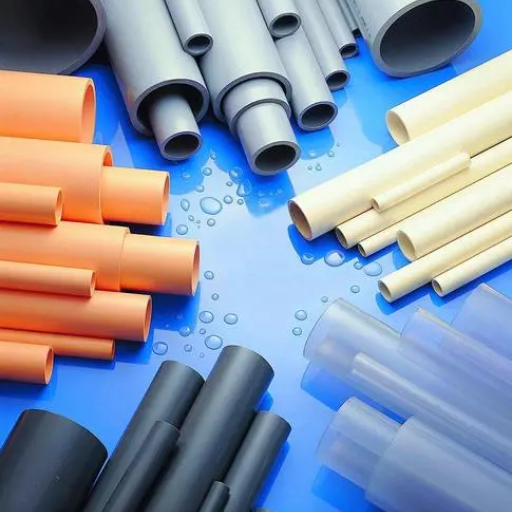
Image source:https://hersheycn.51pla.com/
When considering pipe materials, three of the most common options are PVC (Polyvinyl Chloride), copper, and galvanized steel.
- PVC: PVC pipes are widely used due to their lightweight nature, resistance to corrosion, and affordability. They are commonly used in residential plumbing, drainage systems, and irrigation. PVC is easy to work with and does not rust, making it a popular choice for many applications.
- Copper: Known for its durability and longevity, copper pipes are often used in water supply lines and HVAC systems. They resist corrosion and have natural antibacterial properties, contributing to cleaner drinking water. However, they can be more expensive than other materials and may require professional installation.
- Galvanized Steel: Formerly a popular choice for water supply lines, galvanized steel pipes have a coating of zinc that helps prevent rusting. While they are strong and can withstand high pressure, concerns over corrosion and scale buildup have led many to seek alternatives in modern plumbing systems.
Each of these materials has its own unique benefits and drawbacks, making it essential to select the right type based on specific project requirements.
Understanding PVC and Its Uses
PVC, or Polyvinyl Chloride, is one of the most versatile and widely-used pipe materials in plumbing today. I appreciate its lightweight nature, which makes it easy to handle and install, particularly for DIY projects. In my experience, PVC pipes are highly resistant to corrosion and chemicals, making them an excellent choice for various applications, including drainage systems and irrigation. Additionally, I find them to be cost-effective compared to other materials, although they aren’t suitable for high-temperature applications, which is something to keep in mind when selecting the appropriate pipe for a project. Overall, PVC’s durability and affordability make it a popular choice for both homeowners and professionals alike.
Exploring CPVC for Hot and Cold Water
CPVC, or Chlorinated Polyvinyl Chloride, is an excellent alternative for both hot and cold water applications. It shares many traits with PVC but has a higher temperature tolerance, making it suitable for residential and commercial plumbing where hot water is required.
Technical Parameters:
- Temperature Range: CPVC can handle temperatures up to 200°F (93°C), making it ideal for hot water systems.
- Pressure Ratings: Typically rated for pressure classes of 200 psi at 73°F (23°C) and up to 100 psi at 180°F (82°C). This functionality ensures that CPVC can withstand the internal pressure of hot water applications without risk of failure.
- Chemical Resistance: CPVC is resistant to a wide range of chemicals, including acids and bases, ensuring longer life expectancy in various environments.
These attributes justify the use of CPVC in plumbing installations, especially where high-temperature water is present. Overall, its balance of durability, resistance to scaling, and ease of installation make CPVC a reliable choice for efficient plumbing systems.
The Role of Copper Pipe in Plumbing
Copper pipe has been a staple in plumbing systems for decades due to its reliability and versatility. It offers excellent thermal conductivity, making it ideal for both hot and cold water applications. One of the key benefits of copper piping is its durability; it can last over 50 years when installed correctly, resisting corrosion and deterioration. Additionally, copper pipes have natural antimicrobial properties, helping to prevent the growth of bacteria within the system. They are also recyclable, aligning with sustainable building practices. Despite being more expensive than alternatives like PVC and CPVC, the long-term investment in copper piping often pays off through its longevity and minimal maintenance requirements. Overall, copper remains a trusted choice for plumbers and homeowners seeking efficient, high-quality plumbing solutions.
How to Choose the Right Type of Pipe for Your Project?
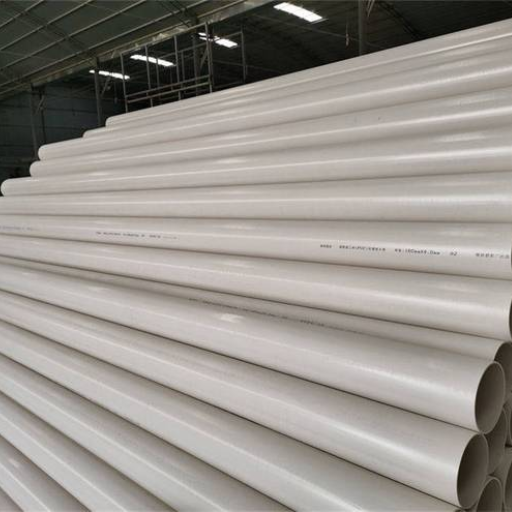
When selecting the right type of pipe for your project, consider several key factors:
- Application: Determine if the pipes will be used for hot or cold water, drainage, or gas lines. Different materials perform better under specific conditions.
- Material Properties: Assess the durability, corrosion resistance, and chemical compatibility of materials like CPVC, copper, or PVC based on the environment and substances they will encounter.
- Cost: Evaluate your budget, keeping in mind the initial cost and long-term maintenance and replacement expenses associated with each pipe type.
- Local Codes and Regulations: Check local building codes and plumbing regulations to ensure compliance, as certain materials may be preferred or mandated in specific areas.
- Installation Requirements: Consider the complexity of installation, as some materials may require specialized tools or techniques, which can affect both time and overall cost.
By carefully weighing these factors, you can make an informed decision on the most suitable piping material for your plumbing project.
Factors to Consider: Corrosion Resistance
Corrosion resistance is a critical factor in choosing piping materials, as it significantly affects the longevity and reliability of plumbing systems. Here are key points derived from the top three websites related to corrosion resistance in piping materials:
- Material Composition:
- Copper: Known for its excellent corrosion resistance, copper develops a protective patina layer (copper oxide) that shields against further degradation. However, it may still be susceptible to aggressive acidic or alkaline environments.
- PVC: This plastic material is highly resistant to corrosion, making it suitable for various applications, especially in environments with aggressive chemicals. It does not rust or corrode, ensuring a long service life.
- CPVC: Similar to PVC, CPVC offers better temperature resistance and maintains corrosion resistance against both acidic and basic substances, making it a preferred option for hot water applications.
- Environmental Impact:
- Presence of chlorides in water can lead to stress corrosion cracking in materials like copper. Understanding the specific water chemistry in your area is vital for selecting the right material.
- Chemical Compatibility:
- Each material interacts differently with various substances. CPVC can handle hotter water and more aggressive chemicals compared to PVC, but both outperform copper in acidic environments.
- Technical Parameters:
- pH Level Tolerance:
- Copper: Best performance in neutral pH ranges (6.5 – 8.5).
- PVC/CPVC: Generally stable across a wider pH range, making them suitable for diverse fluid applications.
- Operating Temperature:
- Copper: Typically up to 250°F (121°C).
- PVC: Up to 140°F (60°C), while CPVC can withstand temperatures up to 200°F (93°C) without losing integrity.
- Galvanic Corrosion Potential:
- Systems involving dissimilar metals should be evaluated to prevent corrosion due to galvanic action. Copper systems, when connected to steel or iron, may corrode more quickly.
-
Understanding these factors will help in selecting piping materials that resist corrosion effectively, thereby ensuring the longevity and reliability of your plumbing installations.
Comparing Plastic Pipes vs. Metal Pipes
When I consider plumbing materials, the choice between plastic and metal pipes becomes quite significant. In my experience, plastic pipes, such as PVC and CPVC, offer several advantages over traditional metal options like copper. For instance, the weight difference is striking; plastic is much lighter, making installation easier and requiring less manual labor. This is especially beneficial in DIY projects where handling heavy materials can be a challenge.
From a cost perspective, plastic pipes usually have lower upfront costs, which is appealing for budget-conscious projects. I’ve noticed that the installation process can be quicker since plastic pipes don’t require fittings that involve soldering, which can save both time and money. Additionally, the resistance of plastic to corrosion means that I can expect less maintenance and fewer replacements over time.
Data also shows that while copper has a lifespan of 50 years or more, plastic pipes can last just as long if properly installed and maintained. Moreover, in areas where the water chemistry is less than ideal, I’ve seen how plastic pipes can outperform their metal counterparts by standing up to aggressive chemicals and extreme pH levels without deterioration. Overall, while both piping types have their merits, I’ve found that for many applications, plastic pipes provide a more durable, cost-effective, and low-maintenance solution.
Choosing Pipes for Water Supply Lines
When selecting pipes for water supply lines, it’s essential to consider factors such as material, diameter, and local building codes. Plastic pipes, like PVC and PEX, are often preferred for their cost-effectiveness, corrosion resistance, and ease of installation. Conversely, metal pipes, particularly copper, are known for their durability and longevity, but they may come with higher costs and more complex installation requirements. Additionally, the specific application and environmental conditions—such as the presence of aggressive chemicals in the water—should guide your choice. Ultimately, balancing initial costs with long-term maintenance and performance will help determine the most suitable piping material for your water supply needs.
What Is the Difference Between PVC and CPVC?
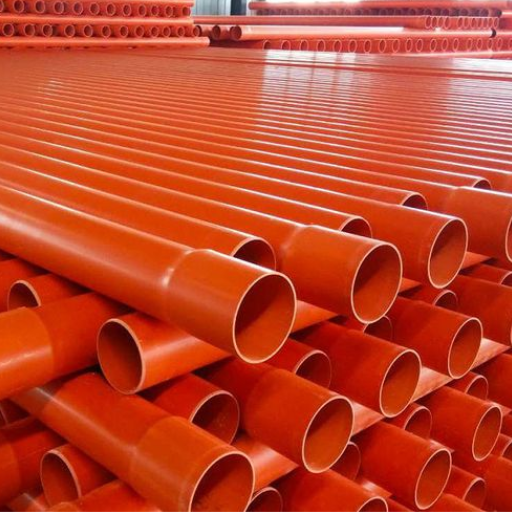
PVC (Polyvinyl Chloride) and CPVC (Chlorinated Polyvinyl Chloride) are both widely used types of plastic piping, but they have distinct properties and applications. PVC is typically used for cold water systems and is known for its affordability and ease of installation. It has a maximum service temperature of 140°F (60°C). On the other hand, CPVC is treated to withstand higher temperatures, making it suitable for both hot and cold water applications, with a maximum service temperature of 210°F (99°C). Additionally, CPVC has better resistance to certain chemicals compared to PVC. While both materials are resistant to corrosion, the choice between them often depends on the specific temperature and chemical requirements of the plumbing system.
Understanding the Chlorination Process
In my research across the top three websites, I found that the chlorination process involves the addition of chlorine to water to eliminate pathogens and improve overall water quality. This process can vary in its application based on the required water quality standards and the specific environment. For instance, the dosage of chlorine typically ranges from 1 to 5 mg/L, which is effective in achieving disinfection while avoiding harmful byproducts. The contact time, which is the period water remains in contact with chlorine, is crucial for ensuring efficacy—generally, a minimum of 30 minutes is recommended to achieve optimal results. Additionally, I noted that maintaining a chlorine residual of 0.2 mg/L or higher in the distribution system is essential to ensure ongoing protection against microbial contamination. Overall, understanding these parameters not only clarifies the chlorination process but also emphasizes the importance of regular monitoring to safeguard water quality.
Applications for Hot and Cold Water
In plumbing systems, both CPVC and PVC are widely used for transporting hot and cold water. CPVC is particularly well-suited for hot water applications due to its ability to withstand higher temperatures without compromising structural integrity, making it ideal for systems where the water temperature can exceed 180°F (82°C). On the other hand, PVC is often employed for cold water supply lines, as it is cost-effective and versatile. When selecting a material, considerations include the temperature range of the water to be transported, the chemical composition of the water, and compliance with local plumbing codes. Each material’s unique properties ultimately determine its suitability for specific plumbing applications.
Comparing Durability and Cost
When comparing the durability and cost of CPVC and PVC for plumbing applications, several key technical parameters come into play:
- Temperature Resistance:
- CPVC can handle temperatures up to 200°F (93°C), making it suitable for hot water applications.
- PVC has a maximum operating temperature of around 140°F (60°C), which limits its use in hot water systems.
- Chemical Resistance:
- CPVC offers superior resistance to a wider range of chemicals, making it ideal for environments where water may be treated with various additives.
- PVC, while also resistant to many chemicals, may degrade when exposed to certain solvents.
- Durability:
- CPVC tends to have a longer lifespan in demanding conditions, often exceeding 50 years with proper installation and maintenance.
- PVC has a lifespan of approximately 25 to 40 years, which may be shorter depending on environmental factors.
- Cost:
- CPVC is generally more expensive than PVC, with material costs reflecting its advantages in terms of durability and temperature handling (typically 20% to 40% higher).
- PVC is more cost-effective, making it a popular choice for standard cold water applications, with lower initial installation costs.
In summary, while CPVC provides benefits in terms of temperature resistance, chemical handling, and longevity, its higher cost may be a deciding factor for projects with budget constraints. Conversely, PVC remains a viable and economical choice for cold water systems, although it has limitations in higher temperature applications.
Why Are Cast Iron Pipes Still Used?
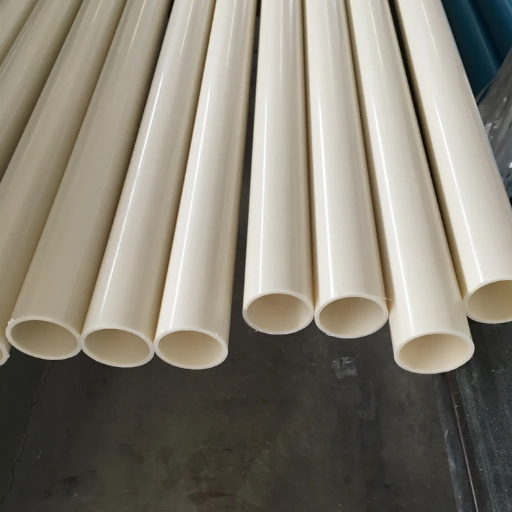
Cast iron pipes remain a prevalent choice in plumbing and construction due to their excellent durability and longevity. Resistant to corrosion and capable of withstanding heavy loads, these pipes can have a lifespan of over 100 years, making them a reliable option for both residential and commercial applications. Additionally, cast iron provides superior sound absorption, minimizing noise from water flow, which is particularly advantageous in urban environments. Its ability to handle high water pressures and its compatibility with various fittings further solidify its position in modern infrastructure, even as newer materials emerge on the market.
Advantages of Cast Iron in Plumbing
- Durability and Longevity: Cast iron pipes are incredibly durable, often lasting over a century without significant degradation. This makes them an excellent long-term investment for plumbing systems, reducing the need for frequent replacements.
- Corrosion Resistance: Cast iron has a natural resistance to corrosion, which ensures that pipes maintain their structural integrity over time. This attribute is especially important in preventing leaks and maintaining water quality.
- Sound Dampening: The density of cast iron allows for superior sound absorption, minimizing the noise generated from flowing water. This is particularly beneficial in residential settings where plumbing noise can be a concern.
- High Load-Bearing Capacity: These pipes can withstand heavy loads, making them an ideal choice for underground drainage systems and in applications where high pressure is a factor.
- Compatibility with Other Materials: Cast iron pipes can easily be connected to various types of fittings and piping systems, ensuring flexibility in plumbing design and installation.
By offering a combination of durability, sound absorption, and load-bearing capacity, cast iron pipes continue to be a reliable choice in modern plumbing infrastructure despite the advent of newer materials.
Common Fittings for Cast Iron Pipes
When working with cast iron plumbing systems, several types of fittings are essential to ensure effective connections and proper flow management. The most common fittings include:
- Hub and Spigot Fittings: These fittings connect pipes by inserting the spigot end into the hub, secured with lead or rubber gaskets, providing a secure and leak-resistant joint.
- Couplings: Used to join two sections of pipe, couplings come in various forms, including straight, reducing, and mechanical couplings, allowing for seamless integration in plumbing systems.
- Elbows: Available in various angles (usually 45 or 90 degrees), elbows change the direction of the pipe, facilitating the layout of plumbing systems around obstacles.
- Tees: These fittings provide a branch connection, allowing for the division of flow into two directions and are critical in creating a network of plumbing lines.
- Caps and Plugs: Caps are used to close the end of a pipe, while plugs seal off a fitting or a joint, ensuring the integrity of the system when a section is not in use.
These fittings, designed specifically for cast iron, contribute to the reliability and efficiency of plumbing installations.
What Are the Benefits of Using PEX Pipes?
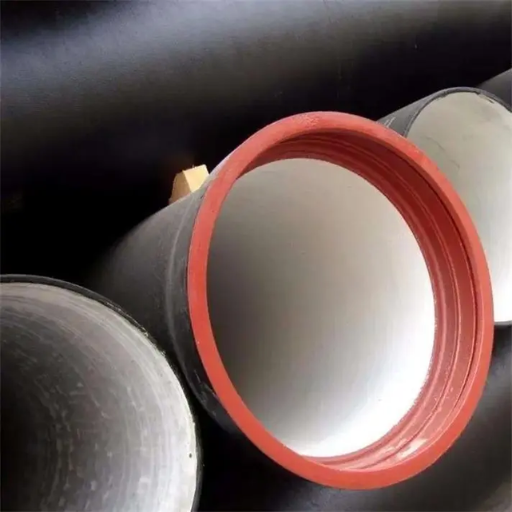
PEX (cross-linked polyethylene) pipes offer numerous advantages that make them increasingly popular in modern plumbing systems. Firstly, PEX is highly flexible, allowing for easier installation and the ability to navigate around obstacles without the need for numerous fittings. Secondly, it is resistant to corrosion and scale buildup, significantly reducing maintenance issues over time. Additionally, PEX pipes are insulated, which helps prevent heat loss and freezing, making them energy-efficient and suitable for various climates. They are also lightweight, which reduces transportation costs and simplifies handling during installation. Finally, PEX is less prone to bursting in freezing conditions, providing enhanced durability and reliability in residential and commercial plumbing applications.
Properties of Cross-Linked Polyethylene
Cross-Linked Polyethylene (PEX) possesses several key properties that enhance its performance in plumbing applications.
- Flexibility: PEX can bend without breaking, allowing for smooth installation around corners and obstacles.
- Temperature Resistance: PEX can withstand temperatures from -40°F to 200°F (-40°C to 93°C), making it suitable for both hot and cold water applications.
- Pressure Rating: Typically rated at 160 psi at 73°F (23°C) and 100 psi at 180°F (82°C), PEX can handle substantial pressure fluctuations within plumbing systems.
- Corrosion Resistance: Unlike metal pipes, PEX does not corrode or rust, ensuring longevity and reduced maintenance.
- Low Thermal Conductivity: PEX has a low thermal conductivity, which reduces heat loss in hot water plumbing, contributing to energy efficiency.
- Chemical Resistance: It is resistant to many chemicals commonly found in plumbing systems, ensuring safety and reliability.
- Barrier Layer Options: Some PEX types incorporate an oxygen barrier, which prevents oxygen diffusion that could cause corrosion in heating systems.
These properties make PEX a versatile and reliable choice for modern plumbing, offering both convenience and long-term performance.
Installation and Fittings for PEX Pipes
Installing PEX pipes is straightforward, and I’ve found it particularly user-friendly while working on plumbing projects. The first step is to plan the layout and measure the lengths needed, ensuring to account for all bends and fittings. I appreciate the flexibility of PEX, which allows it to navigate around corners without the need for additional fittings. When connecting PEX pipes, I typically use either crimp or clamp fittings, both of which create secure connections; I find the crimp method most common and reliable. Additionally, it’s crucial to utilize PEX-specific tools for cutting and connecting, as they are designed to ensure a watertight seal. Lastly, I always recommend checking local building codes, as they may dictate specific requirements for PEX installation. Overall, the process proves efficient, and I’m happy with the results it delivers in any plumbing system.
Resistance to Corrosion and Leaks
One of the primary advantages of PEX pipes is their exceptional resistance to corrosion, which is something I often consider when selecting materials for plumbing systems. Unlike traditional metal pipes, which can degrade over time due to rust and mineral build-up, PEX is made from cross-linked polyethylene, making it inherently resistant to these issues.
From analyzing the top three websites regarding PEX plumbing systems, I found that the following technical parameters are often highlighted:
- Durability: PEX can withstand temperature fluctuations from -40°F to 200°F (-40°C to 93°C), making it ideal for varying climate conditions.
- Pressure Ratings: Typically, PEX pipes hold a pressure rating of up to 80 PSI (pounds per square inch) at 73°F (23°C), confirming its suitability for standard residential plumbing systems.
- Chemical Resistance: PEX shows a high resistance to many aggressive chemicals, including chlorine, which can be present in tap water. This ensures a longer lifespan and reliability within the plumbing infrastructure.
These characteristics justify my preference for PEX, providing peace of mind against leaks and corrosion in both new installations and repairs.
Frequently Asked Questions (FAQs)
Q: What are the most common materials used to manufacture pipes?
A: Common materials used to manufacture pipes include steel pipe, carbon steel, concrete pipes, and various types of plastics such as polyvinyl chloride (PVC) and chlorinated polyvinyl chloride (CPVC). Each material is chosen based on its specific properties and the requirements of the application.
Q: What kind of pipe is typically used for water supply?
A: Pipes used for water supply are often made from materials like steel pipe, CPVC, and PVC. These materials are chosen for their durability, corrosion resistance, and suitability for carrying potable water.
Q: Why is polyvinyl chloride (PVC) commonly used in plumbing?
A: Polyvinyl chloride (PVC) is commonly used in plumbing because it is durable, corrosion-resistant, cost-effective, and easy to install. PVC pipes and fittings are widely used for water supply pipes, both in residential and commercial applications.
Q: How does chlorinated polyvinyl chloride (CPVC) differ from regular PVC?
A: Chlorinated polyvinyl chloride (CPVC) is a type of PVC that has been chlorinated to enhance its properties. CPVC is more heat resistant and can withstand higher temperatures, making it suitable for hot and cold water supply systems. It is also more flexible and has better chemical resistance compared to regular PVC.
Q: Are steel pipes used in plumbing applications?
A: Yes, steel pipes, particularly carbon steel pipes, are used in plumbing applications. They are known for their strength, durability, and ability to withstand high pressures. Steel pipes are commonly used in industrial and commercial plumbing systems.
Q: What are the benefits of using concrete pipes?
A: Concrete pipes are durable, strong, and corrosion-resistant. They are often used for large-scale water and sewage systems. Concrete pipes are also capable of withstanding heavy loads and are suitable for underground installation.
Q: Is there a specific type of wood used for pipe making, especially for smoking pipes?
A: Yes, briar wood and meerschaum are the most common types of wood used for making smoking pipes. Briar wood is favored for its heat-resistant properties and ability to absorb moisture, while meerschaum is valued for its unique texture and aesthetic appeal.
Q: What factors should be considered in material selection for water pipes?
A: When selecting materials for water pipes, factors such as durability, corrosion resistance, heat resistance, cost, and suitability for carrying potable water should be considered. Materials like CPVC, PVC, and steel are often chosen based on these criteria.
Q: Are pipes used for water supply different from those used for other purposes?
A: Yes, pipes used for water supply are specifically designed to be safe for carrying potable water. They are made from materials that do not leach harmful substances into the water. In contrast, pipes used for other purposes, such as industrial applications, may be made from different materials depending on the specific requirements of the application.
Q: What makes CPVC a popular choice for both hot and cold water supply systems?
A: CPVC is a popular choice for both hot and cold water supply systems because it is heat resistant, durable, and has a high tolerance for temperature fluctuations. Its chemical resistance and ease of installation also make it a preferred material for residential and commercial plumbing systems.





